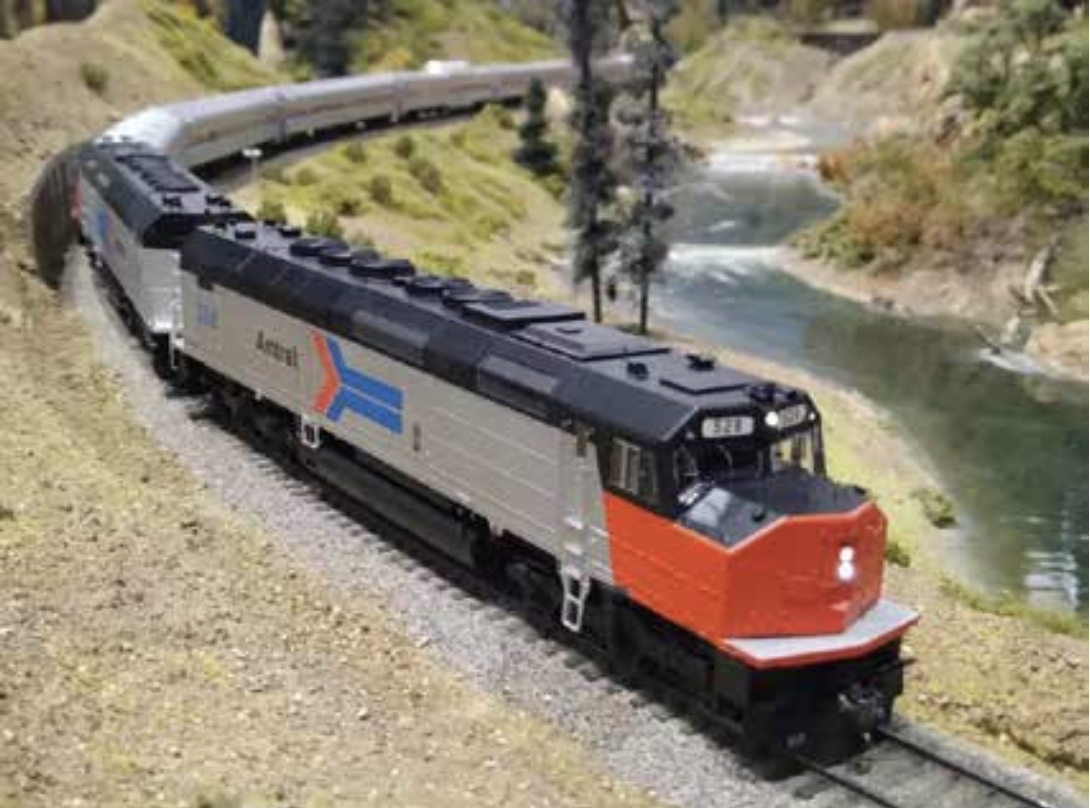Mondays are Good Days
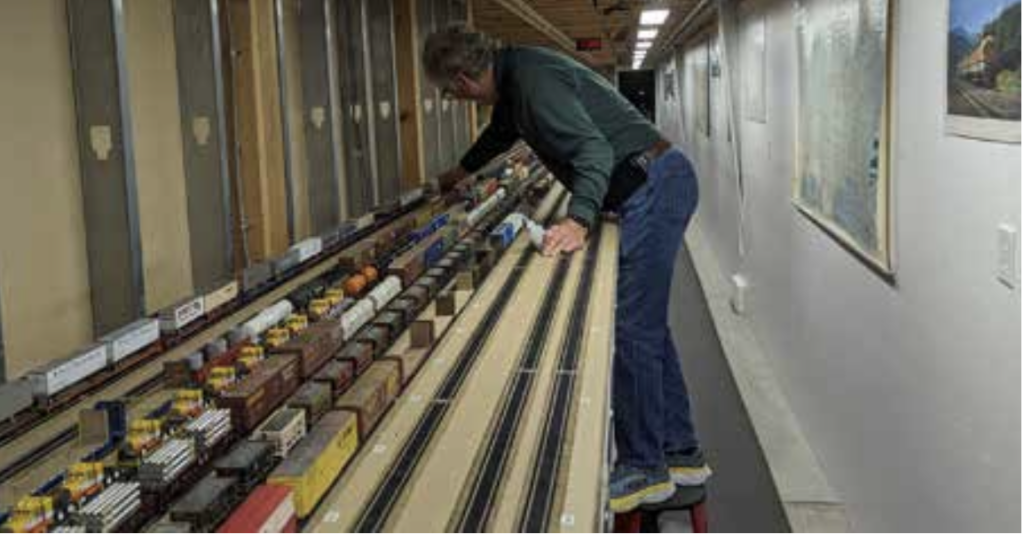
While the museum is not open on Mondays, some of the museum’s most dedicated volunteers are always hard at work cleaning the OC&E layout and getting it ready for the next week’s visitors.
Look at the photos. These guys show up at 8 AM and work hard into the afternoon. They might start out cleaning the main line’s track, but they’ll also clean the yards and other trackage on the layout, including the staging yard.
They also clean the wheels on all the locomotives and cars on the layout. As you can imagine this is a tedious job, given there are probably 8000 axles on the layout at any one time. They don’t do every car, every week, but have a rotating procedure they follow that ensures they do catch things before they get dirty enough to impede operations.
They can always use more help!
Please Clean Your Wheels!
The dirtiest areas on the layout tend to be the tracks where personal trains are set up. The only way this can happen is if that equipment is dirty when it arrives. One of the responsibilities of those volunteers running their equipment is to keep the wheels on their personal trains clean.
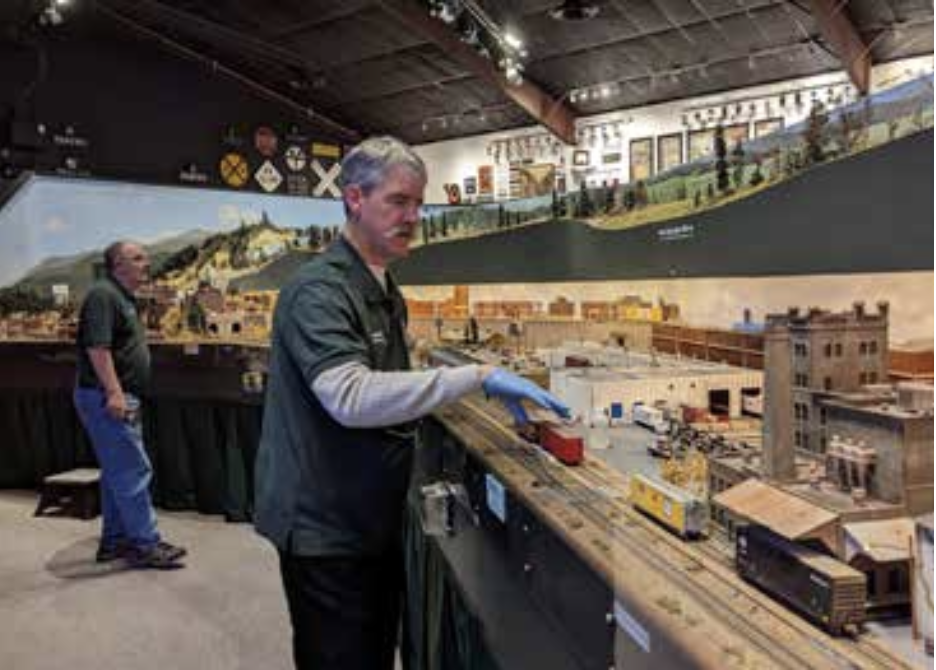
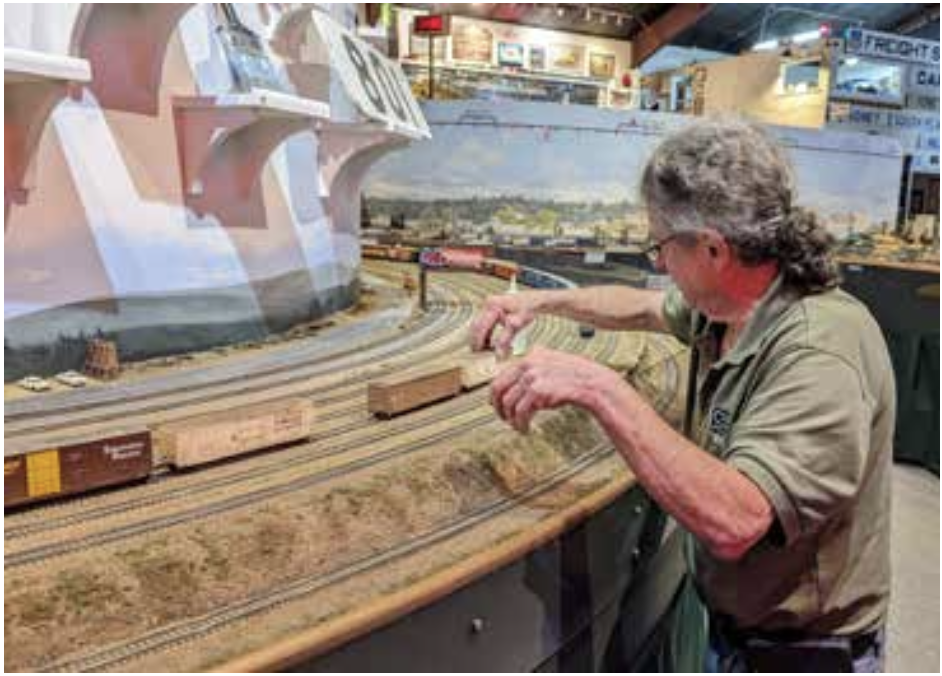
Inauguration of the Amtrak Coast Starlight
CMRM Fleet Services, Bob Pilk and Gene Frank
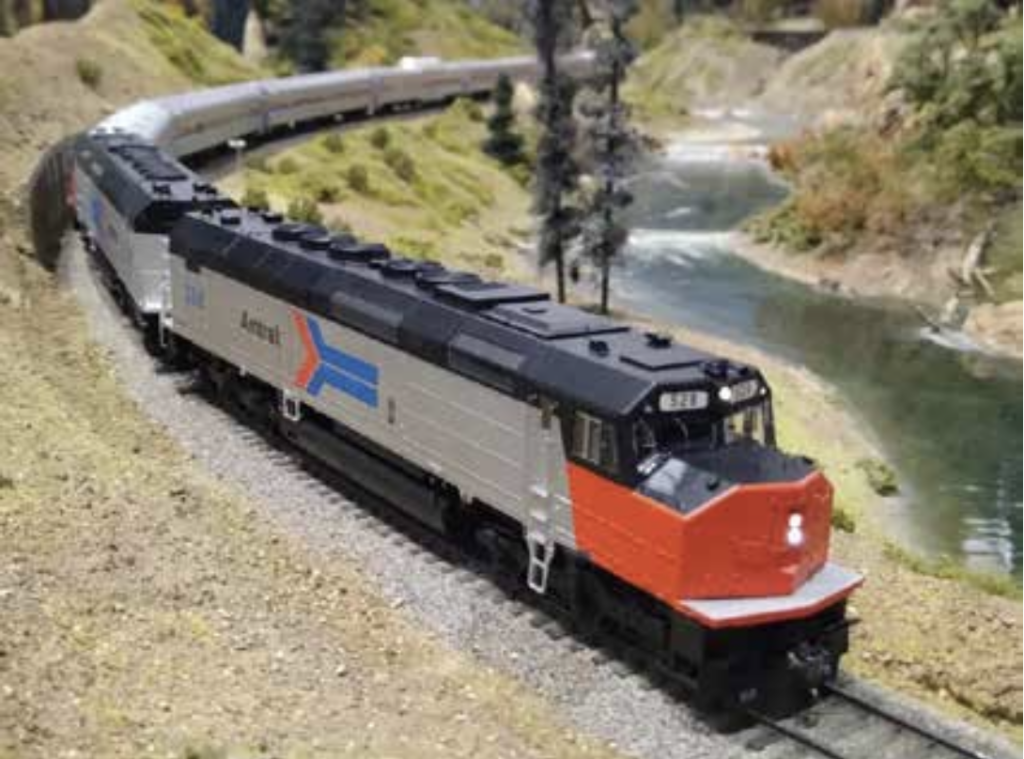
As the day Amtrak was formed approached, May 1, 1971, the new railroad had quickly put together a nationwide system of routes, running many trains similar to that of the day before.
However, there had been no one train prior that traversed the west coast between Seattle and San Diego. Up to April 30, 1971, making that trip by rail would require changing trains three times.
The trip would start taking a nameless Burlington Northern or Union Pacific train from Seattle to Portland Union Station where one would then take Southern Pacific’s “Cascade” south to Oakland, California. Passengers would detrain at Oakland and take a bus to San Francisco, where they would catch Southern Pacific’s “Coast Daylight” to Los Angeles. At Los Angeles, travelers would then take a Santa Fe “San Diegan” to complete the trip.
During the era of popular rail travel, many years prior to Amtrak, there were several Southern Pacific trains that traversed the territory between Portland and Los Angeles, including the “Starlight”, “Cascade”, “Coast Daylight”, “San Joaquin Daylight”, “Shasta Daylight”, “Lark” and the “Owl”, but none of these trains covered the entire distance as one train. By the 1960s several of these trains saw either reduced service or were cut entirely. When selecting a name for Amtrak’s new 1971 train, it settled upon a combination of the former Southern Pacific name trains and came up with “Coast Starlight”.
Not long after initiating the train, Amtrak shortened the “Coast Star- light” service in 1972 to between Seattle and Los Angeles – the same service that continues to this day.
Major cities along the route include Seattle, Tacoma, Portland, Eugene, Klamath Falls, Sacramento, Oakland, San Jose, and Los Angeles.
The Colorado Model Railroad Museum is inaugurating a 1975 version of Amtrak’s “Coast Starlight” to better replicate the passenger train that served Klamath Falls. Formerly, a 2000’s era, contemporary version of Amtrak’s “Empire Builder” traversed the layout, however, the prototype “Empire Builder” got no closer to Klamath Falls than Portland, Oregon, and thus will be stored.
The Amtrak “Coast Starlight” will operate out of Chiloquin staging as train number 14, which is actually the reverse of the prototype routing. Astute railfans may know the number 14 is used on Amtrak’s northbound Coast Starlight, which would be westward on the OC&E layout. Why? The answer goes back to the Southern Pacific era when all trains traveling from Portland OR toward Oakland CA were considered westbound and thus were odd-numbered. After Amtrak took over, the number remained since Amtrak considers the train traveling from Seattle to Los Angeles a south- bound train and thus should be an odd number. To avoid confusion with running an odd-numbered Amtrak #11 out of Chiloquin staging, the museum will use Amtrak #14.
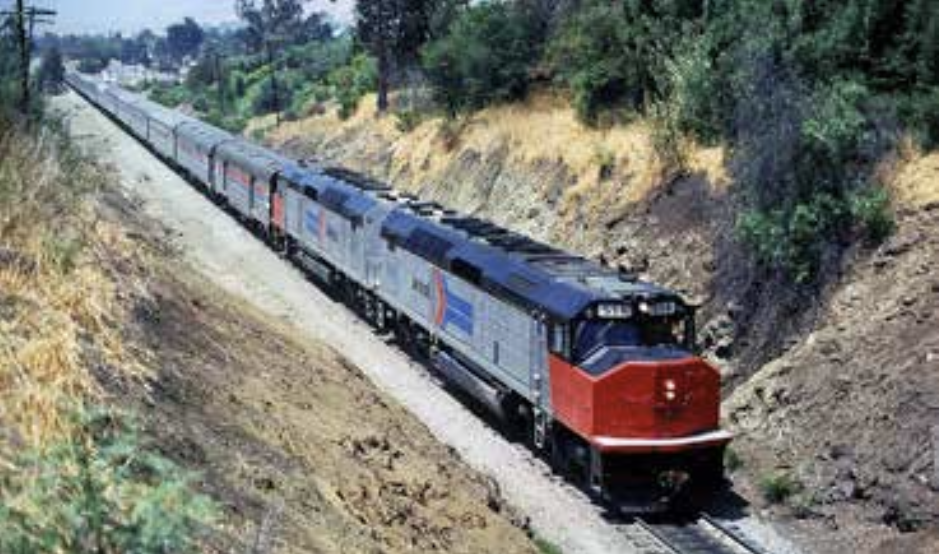
San Luis Obispo CA, July 1974, Craig Walker
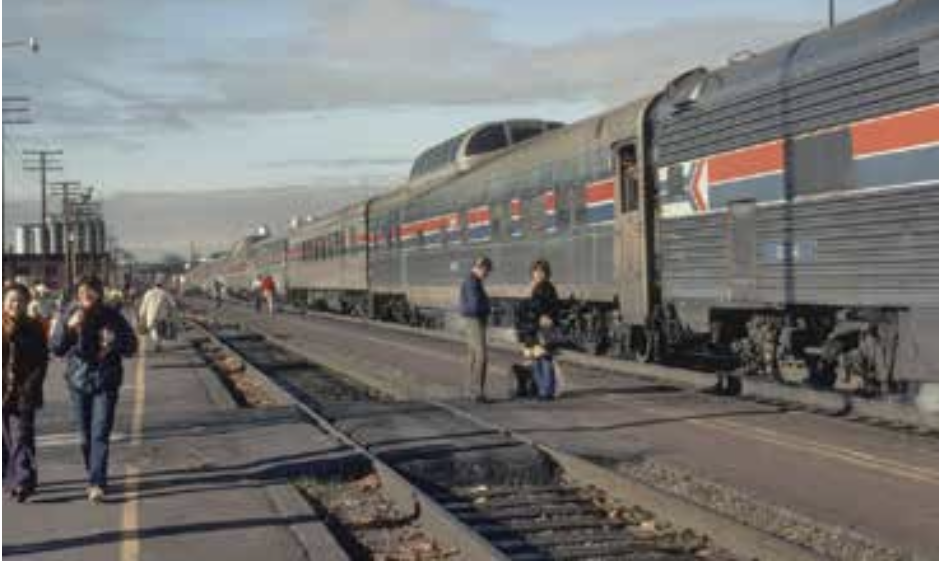
Eugene OR, December 1980, by unk
The CMRM version of the Amtrak train will be powered by Athearn Genesis EMD SDP40Fs. These were the first locomotives built for Amtrak, to replace the 1950’s era E and F units carried over from former passenger railroads.
The SDP40Fs were built by General Motors from 1973 to 1974, numbering 150 units for Amtrak. SDP40F stood for SD = Special Duty, 6-axle, P = Passenger, meaning steam generators for train heat, 40 = EMD 40 series locomotive, and F = Full-width car body. In simple terms, it was a passenger version of EMD’s SD40-2, the popular freight locomotive which was in production from 1972 to 1989.
The passenger cars will consist of low-level heritage fleet models, carried over from former passenger railroads. Bi-level Superliners did not go into service on Amtrak until 1979. The passenger cars are decorated in either of two Amtrak paint schemes. The phase 1 paint scheme, introduced in 1972, consists of a stainless or “platinum mist” colored body with two broad horizontal stripes through the windows, one red and the other blue, with small white pinstripes and an Amtrak arrow at one or both ends of the car. The phase 2 scheme, introduced in late 1974, was basically the same as phase 1, but without the “pointless” Amtrak arrow at the car ends.
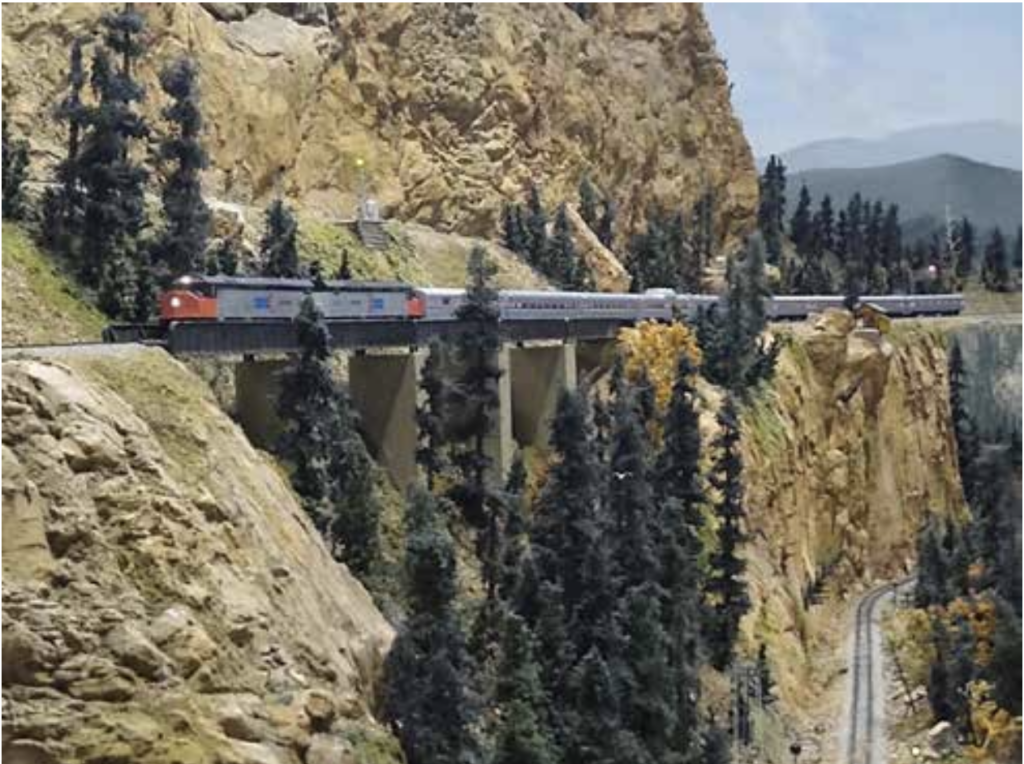
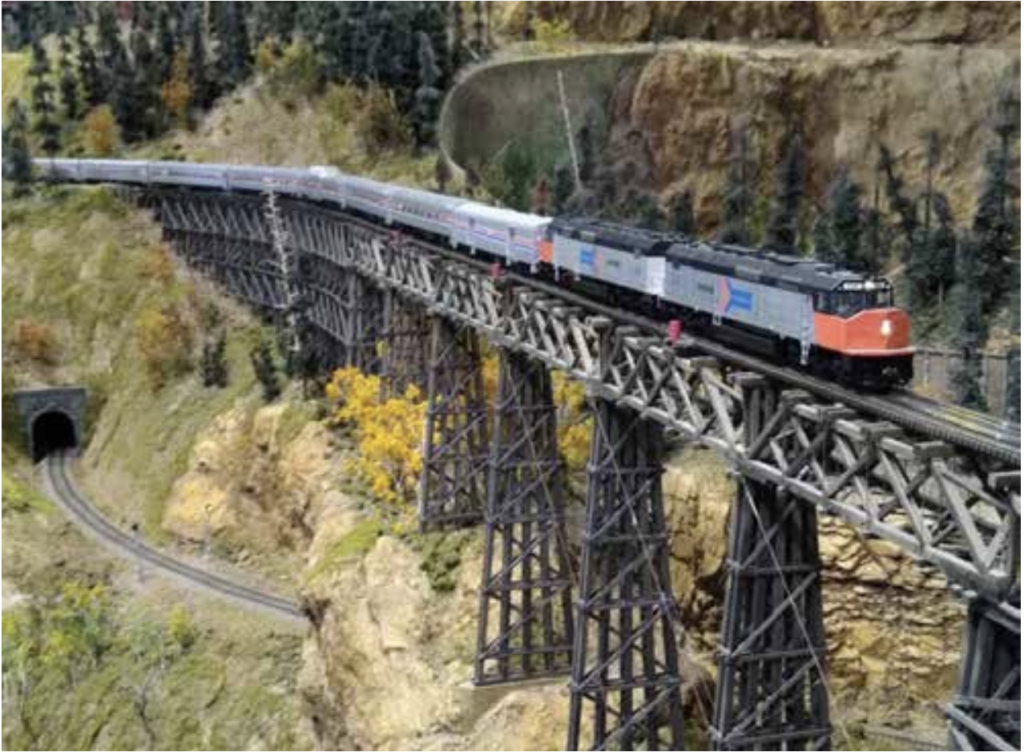
Other Train Notes:
The Coast Daylight operated between Los Angeles and Oak- land and was a much shorter train than the Coast Starlight
(Los Angeles to Seattle, WA) that also operated on this line. The Daylight operated northbound on Mondays, Tuesdays, Thursdays, and Saturdays, while the southbound train (#12) operated on Mondays, Wednesdays, Thursdays and Saturdays. The Coast Starlights operated on the days not operated by the Daylights.
Beginning with the June 10, 1973, timetable, this Coast Star- light became a daily train, and the Coast Daylight was relegated to a historical footnote in Amtrak lore. This accounts for the unusual numbering of trains #11 and #14, the Coast Starlight – They were numbered around trains #12 and #13, the Coast Daylight. When trains 12 and 13 disappeared, the remaining trains, 11 and 14, remained. (The rear car, Amtrak 3341, is a 1947-built tavern observation that was acquired from the Seaboard Coast Line [ex-SCL 5841, originally Seaboard Air Line 6601], constructed by Budd.)
Reward Offered
If you happen to come across someone suspiciously offering a set of Amtrak locomotives and cars for sale, they may be one of our volunteers’ The case of Amtrak locomotives and cars pictured below, was taken from museum grounds on Sunday, April 30. Please contact the museum at 970-392-2934 If you see them.
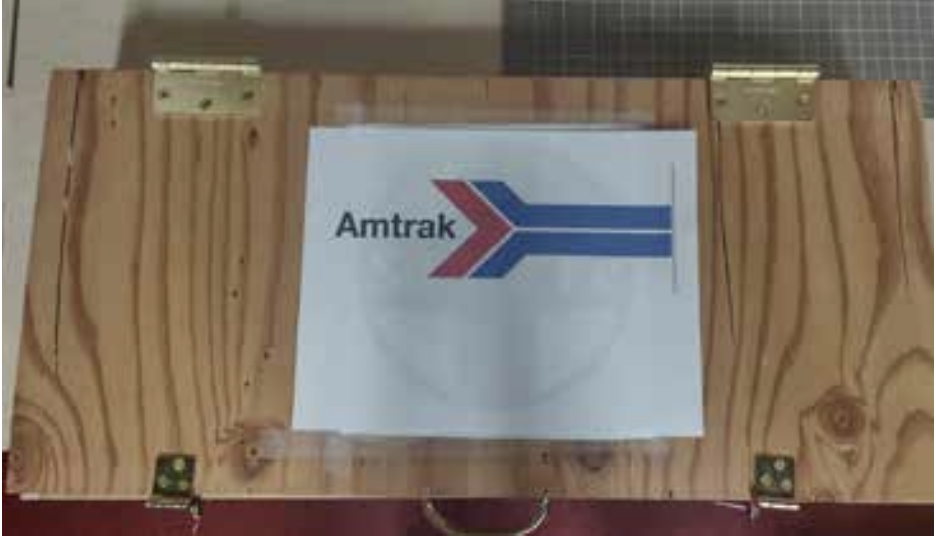
Join the Newsletter Team!
After considerable feedback, we have decided to publish the newsletter on a monthly basis. There is a lot of progress at the museum these days and we want to ensure everybody has a chance to see all the good work everybody is doing.
All museum Staff, Board and Team Leaders have an open invi- tation to provide content and we would like to extend the offer to others who frequent the museum to join the team. There is always a lot going on at the museum and we want to share it with those who can’t come often.
What does this entail? There’s no minimum requirement. If you want to provide photographs and other information that we can use, that would be great. One of things we’d like the newsletter to be is a record of who is volunteering and the changes that are occurring. In 20 years, we want to be able to remember who was here and what they did. Fortunately there is some record of this from the past, but it is something that we need to continually work on.
Contact cmrmeditor@gmail com if you have questions or material that you want to submit.
Does anyone wish to donate a DVD Player?
The player we have has stopped working, and since DVDs aren’t as popular anymore, maybe one of us has one they aren’t using and can donate to the museum?
CMRM Projects Updates – May 2023
Robert Nastan
Front Entry Plaza – Bids have been requested for the provision and installation of the shrubs and trees. Bids have also been requested for the installation of the three bronze statues now residing in the warehouse.
Allo Internet – Allo has completed its installation of their equipment. Phone service and Internet service have been transferred over to them. High-speed WIFI is available to the museum volunteers and guests. The log-in is noted on the refrigerator in the break room. The Century Link service has been cancelled and Century Link was requested to remove their lines from the XCEL poles to be removed.
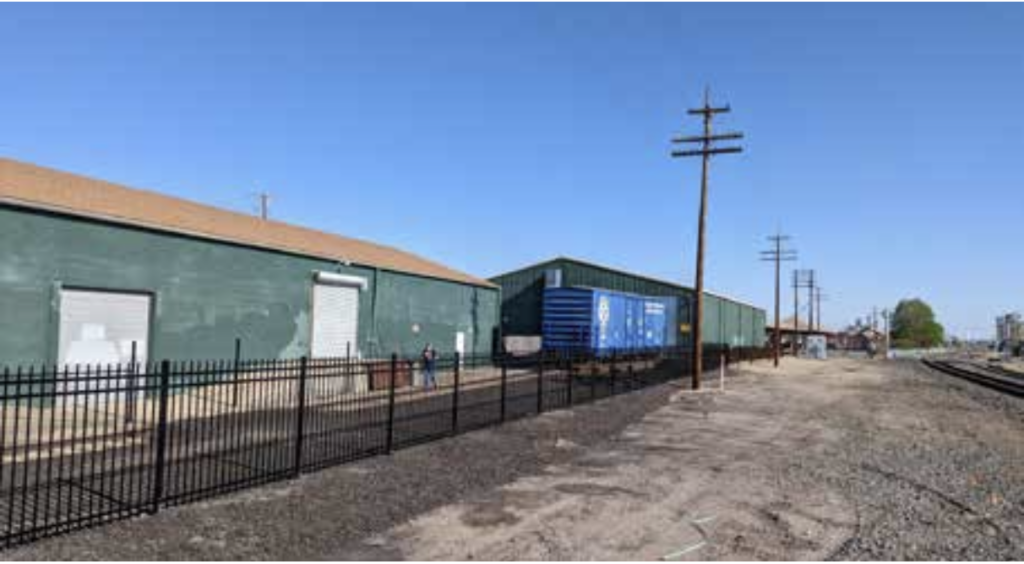
SE Property Line Fence – The City of Greeley has completed its grading and laying of recycled asphalt in preparation for the installation of their portion of the fence. The City’s fence is to start at the corner of the existing fence at the SW corner of 11th Street and the OmniTRAX ROW, extend east, turn north along the UP ROW and end at the south end of the warehouse. The museum will then have fencing installed up to the museum and along the south side of the warehouse. The museum’s fence contractor has been on site to quantify the fence needed. This will include fencing along the east side of the Entry Plaza.
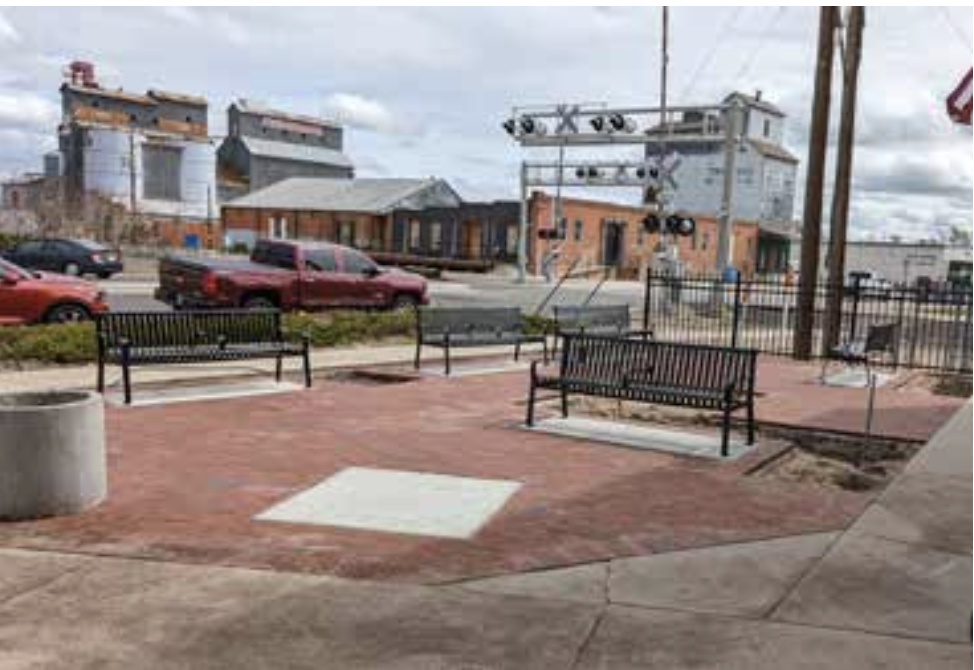
Grounds Area – The City generously graded and laid recycled asphalt on the east, south and west sides of the warehouse. This should improve vehicle access to the warehouse and parking along the west side. The recycled asphalt is minimally compacted so it is possible to “plow it up” making a tight turn. Please drive gently.
XCEL Power Poles – The Board approved the expenditure to relocate the poles at the SW corner of the Museum. The deposit and paperwork was filed with XCEL. Next XCEL will install the new pole. The museum will then install a new main service from the museum to the new pole. A new service will also be installed between the museum and warehouse.
The date for the cut-over has not yet been determined. It is expected the Museum will be without power for two days when this occurs.
Rail Fan Cameras – With high speed Internet now at the Museum, a number of Hi-def cameras can be supported. The Museum is working with Steel Hiways for cameras on the UP. Virtual Railfan will be visiting the Museum in early May.
Warehouse Door
The specifications are being prepared for a new personnel door along the east side. It is hoped bid requests will be going out shortly. Minor improvements to the electrical system in the warehouse are planned. Also, the WIFI network is available in the warehouse.
Introducing the Museum Staff
This will be a series of articles introducing you to, and helping you get to know the employees and volunteers at the museum. Some are new, some have been here awhile.
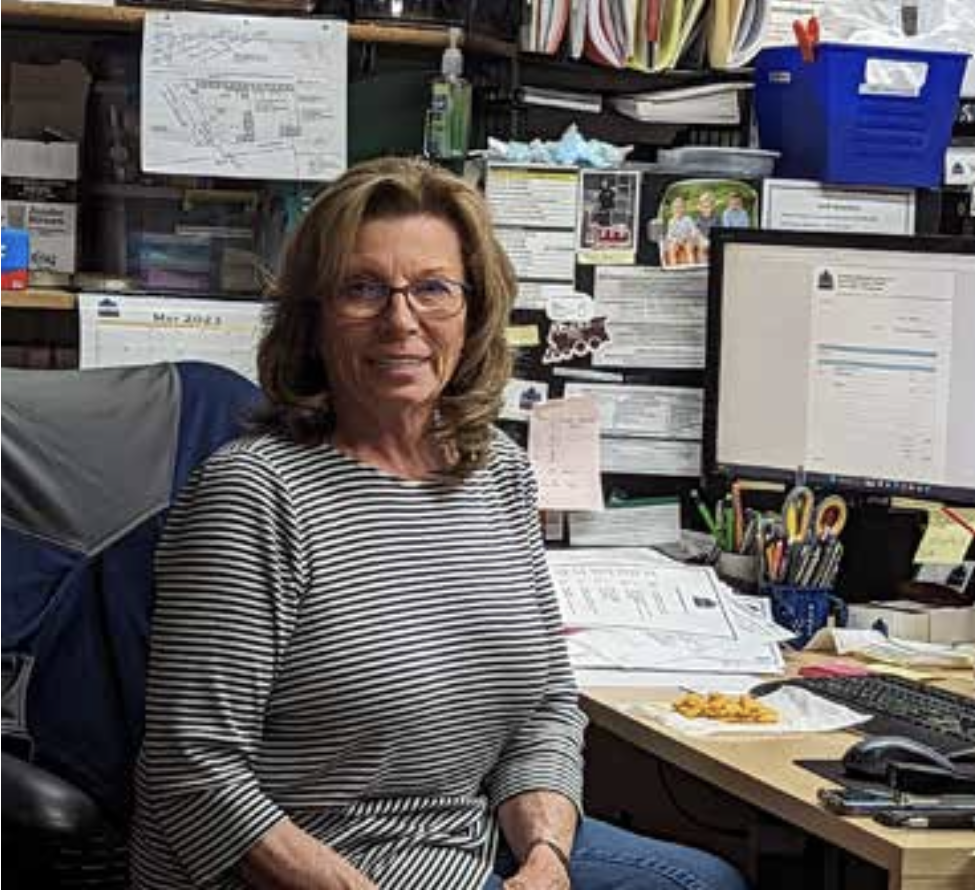
Introducing….. Amy A. Dugan
Amy is the Assistant Director of the museum. Her first day was September 13th, 2021. Amy works with Michelle on strategic planning, managing museum staff, maintaining museum records, ensuring compliance with State and Federal regulations, and creating staff and volunteer development opportunities.
What did you do before working at the museum?
I spent 25 years with Verizon, from starting as the local sales representative in Greeley and Northern Colorado to finishing my career as a national government account director. When I retired, I wanted to reconnect with my hometown so accepted a position at the Greeley Chamber and Visit Greeley. I spent 8 years with that organization before retiring a second time and coming to the museum.
What attracted you to the museum as a place to work?
As the Visit Greeley Director, I enjoyed promoting the museum as my favorite place in Greeley to visit. I touted the museum to residents, Colorado visitors, and tourists from all over the nation. I became good friends with Michelle Kempema and jumped at the chance to become part of the museum as the next step in promoting this wonderful local gem and Greeley.
What are your responsibilities at the museum?
I am the “behind the scenes” person. I help plan tours and events, track expenses, memberships, donations, and I order the items for the gift shop. I answer phones, help keep the business office organized and information filed, and help wherever I can.
What are you most excited about for the future of the museum?
We have such big plans! Currently, the Al Frank Memorial Brick Plaza is a wonderful project for 2023 and beyond. (I love having a “family” brick at many locations.) This project will let our supporters from everywhere purchase a personalized brick that will always be a part of the museum.
Our dream of expanding the museum takes my breath away! I am so excited to see how we will grow and what we will become. I am so happy to be part of this amazing world.
Do you want to share anything about your personal life?
I have lived in Greeley since I was 3 years old, enjoyed attend- ing Greeley schools. I have a degree in Sociology from the University of Colorado at Colorado Springs. My husband, Michael, and I have two great children, Laura who is married to Ryan Sarnicola, and Mick, who is married to Melissa Bolter Dugan. Our amazing grandchildren, Jack and Carter Sarnicola, and Mack Dugan, are the light of our lives and keep us entertained all the time.
Steam or Diesel?
I do love Steam!
Introducing the Museum Staff is contributed by Brion Oakley.
Roadtrip Anyone?
Prior to the Pandemic, museum volunteers occasion- ally got together and visited other museum venues in the area. Colorado Railroad Museum anyone? We might be able to setup a special tour on a Wednesday in June if anyone is interested. If you are, let Bill Kepner at cmrmeditor@gmail.com know you are interested and what days work best for you.
Roadway Team Update
Tim Frade, Roadway Team Lead
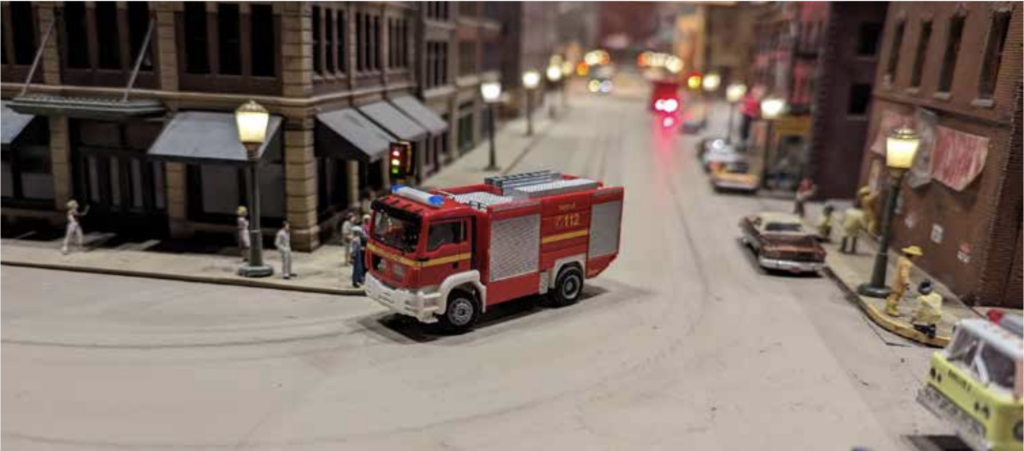
The OC&E layout is unique in that it includes 3 Faller Car Roadway System routes including the City, Highway, and Logging routes. However, the roadway systems have been dormant for many years due to operational, maintenance, and reliability issues. The museum recently kicked off a project team to restore these routes to operation using existing vehicles, roadways, and control systems. During April the team restored 5 vehicles and 2 routes (City and Highway) to operation, and the response from guests and volunteers has been enthusiastically positive.
Our younger guests especially love watching the ambulance with lights flashing navigate the city streets and stop lights. In addition to restoring operations, the Roadway Team has developed a comprehensive plan to update and improve the three routes with new vehicles, roadway fixes, updated con- trol systems and technology, and most importantly enhanced animation and visitor interactivity (more big red buttons to push!). Many thanks to the volunteers who are improving the guest experience by operating and improving the museum’s legacy roadway systems.
Newsletter Signup
How can I be sure to get the Newsletter emailed to me?
The email distribution is managed by our Constant Contact email application. To get on the list, you need to go to the museum web page (http://www.cmrm.org) and scroll down to the bottom to where under Quick Links, you see “Newsletter Sign-Up”.
Click on that and fill out the form. If you see an error message that reads “Request Entity Too Large.”, it means that your Constant Contact web browser cookies are confused and need to be cleared. If this sounds like too much hassle, you can always go to another computer or device and try this again.
Report from the Executive Director Michelle Kempema
It is Spring time again, and this is often associated with renewal and that dreaded “Spring cleaning” around our homes and property. It is no different here at the museum in that we are entering a time of renewal too. We will begin our summer open hours early this year, and now you can enjoy the museum Tuesday through Sunday each week.
We are about to complete the first of our Outdoor Spaces projects, the Al Frank Memorial Plaza. You may have seen the construction work over the winter as we waited for the snow to melt so we could get the bricks in the ground and plant our new vegetation. This plaza will be completed in early summer and we will let you know when to come celebrate with us for a ribbon cutting. The first of the memorial bricks have been laid in the ground and we are accepting the second round of engraved bricks now. Please see the form on our website to get one for yourself or someone you love.
You will also see that there is a new fence along the east side of the southern part of the property. This is the first step in creating an outdoor space for our visitors to enjoy. We are waiting for the removal of the two power poles between our main museum and the warehouse so we can get the garden railroad laid back into the space and get the west side fence up. Soon you will have a place to eat that picnic lunch you brought to the museum while watching the Garden Railroad!
The museum hired Madison Castle at the start of the this year to be the Youth Director. She has jumped right in and our youth programs are lively once more. Look for information soon on the brand new upcoming summer camps for different age groups. This will be the first summer camp we have ever been able to hold at the CMRM.
We are blessed to have this newsletter, thanks to our volunteers. As you read along, you’ll see that I feel like the sun has come out from a long winter, that the rain is creating renewal, and we are entering Spring with joy in our hearts and trains on our minds!
Scenes from the Museum, May 13, 2023
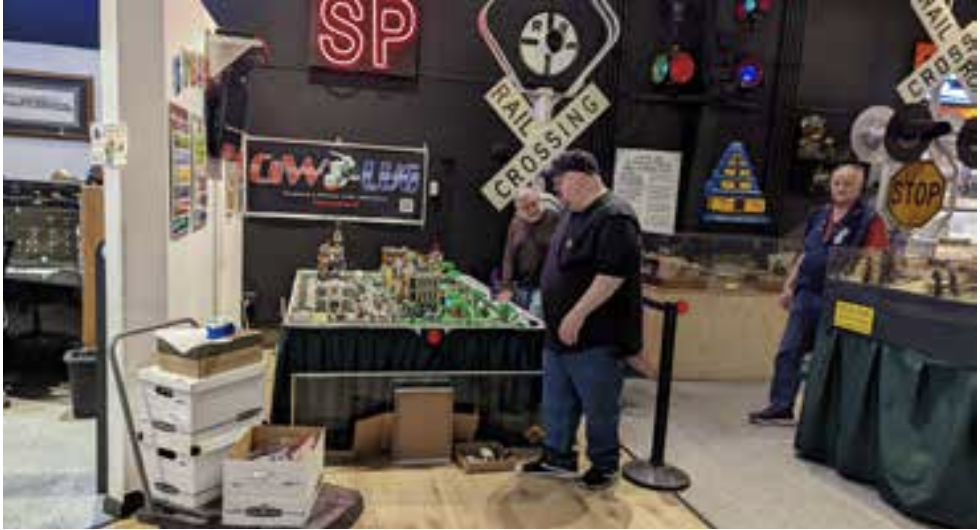
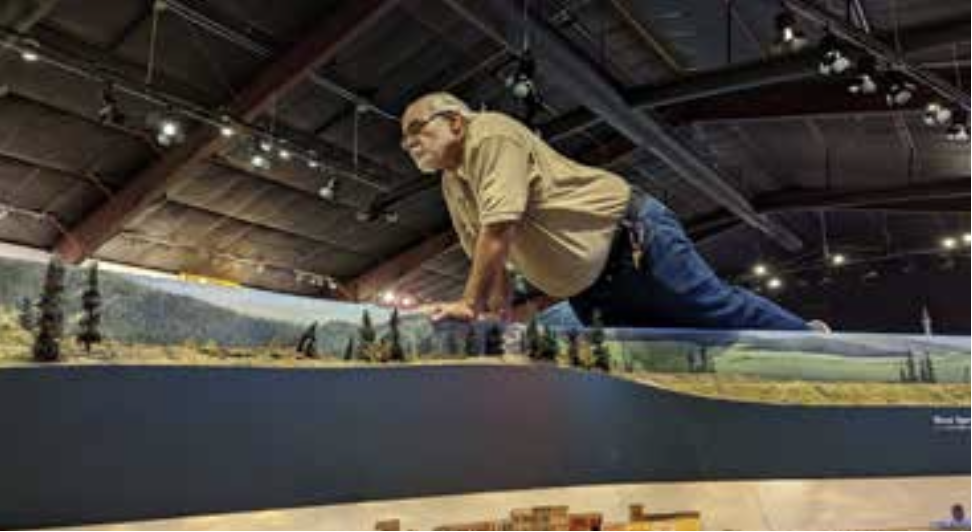
Volunteer Milestones
In this section, we want to highlight some recent volunteer hour milestones. With over 100 active volunteers, we wish we could include a list of all of our amazing volunteers with their hours of contributions to the museum! But to start, we’ll note some recent milestones. This wonderful museum would not be possible without all their time and dedication!
1,000 Hours:
Chris Cochran
Dick Durston
Michael Satterlee
2,000 Hours:
Greg Gardner
Mike Morris
Curt Schukei
5,000 Hours:
Bill Kepner
Bob Pilk
8,000 Hours:
Robert Meis
10,000 Hours:
Darrell Ellis
Wayne Hansen
Randy Palmer
Where Did the Rabbits Go?
Robert Nastan
Those of us who wander between the main museum building and the warehouse were surprised to find cottontail rabbits had built a warren in the mound of dirt intended for the garden railroad layout. The bunnies seemed to enjoy frolicking around the picnic tables, dumpster, and the junipers. The tunnels dug by the bunnies, now named Flopsy and Peter, would provide aeration for the G-Scale railroad, help water drain from the roadbed, and provide natural pruning of the plants on the layout. And probably make operations “interesting.”
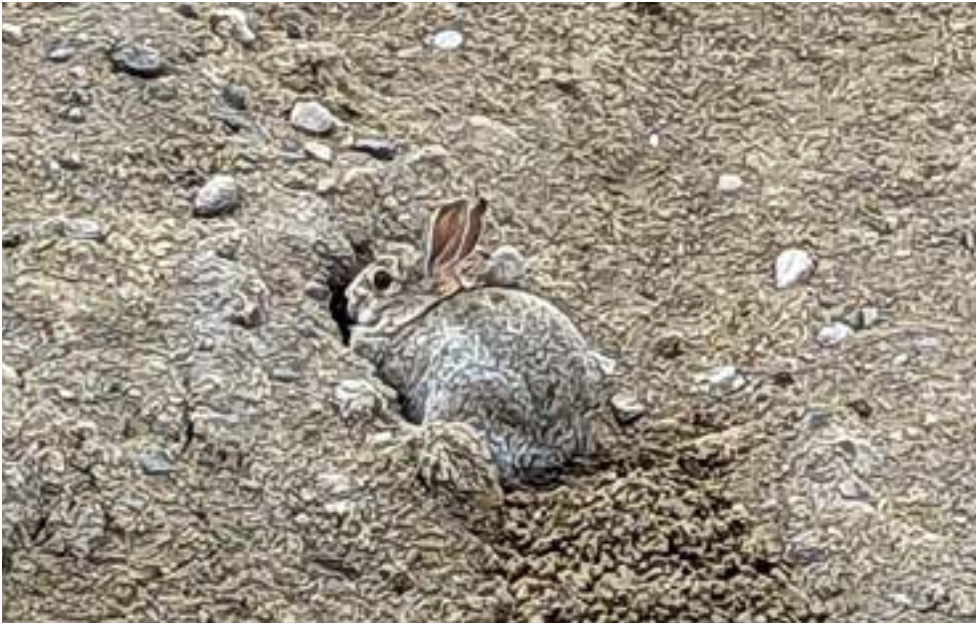
Apparently though, the bunnies may be a relatively unknown sub-species, Sylvilagus obscurus urbanati. This would be a descendant of the common eastern cottontail thriving in a very uncommon western urban environment. As subdivisions and cities expand, various species have to adapt to different environments to survive after being driven from their previous homes. In situations such as this, the US Fish and Wildlife Service would take an interest in preserving both the species and their newly discovered range.
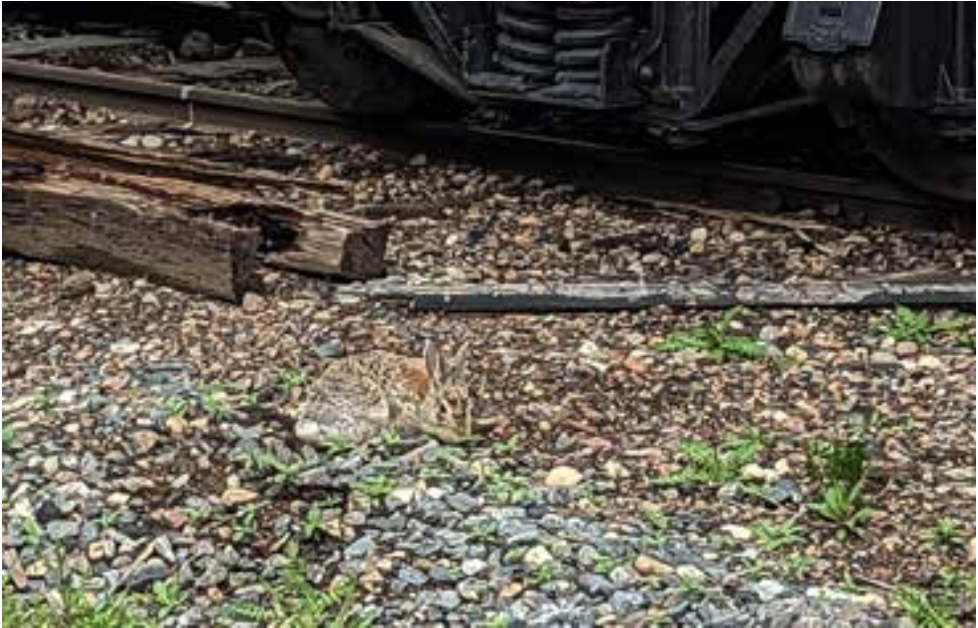
We had been standing by to see what any ruling may be and what the future holds for Flopsy and Peter, especially since they are budding railfans and wanted to live around railroad equipment.
Unfortunately, their home was damaged during the recent rains and the dirt pile needed to be moved so that the power line to the warehouse could be installed. The bunnies were offered a new home at the Colorado Railroad Museum in Golden, and have moved there for now.
We hope they’ll be back!
